Seonghak Kim
FiGKD: Fine-Grained Knowledge Distillation via High-Frequency Detail Transfer
May 17, 2025Abstract:Knowledge distillation (KD) is a widely adopted technique for transferring knowledge from a high-capacity teacher model to a smaller student model by aligning their output distributions. However, existing methods often underperform in fine-grained visual recognition tasks, where distinguishing subtle differences between visually similar classes is essential. This performance gap stems from the fact that conventional approaches treat the teacher's output logits as a single, undifferentiated signal-assuming all contained information is equally beneficial to the student. Consequently, student models may become overloaded with redundant signals and fail to capture the teacher's nuanced decision boundaries. To address this issue, we propose Fine-Grained Knowledge Distillation (FiGKD), a novel frequency-aware framework that decomposes a model's logits into low-frequency (content) and high-frequency (detail) components using the discrete wavelet transform (DWT). FiGKD selectively transfers only the high-frequency components, which encode the teacher's semantic decision patterns, while discarding redundant low-frequency content already conveyed through ground-truth supervision. Our approach is simple, architecture-agnostic, and requires no access to intermediate feature maps. Extensive experiments on CIFAR-100, TinyImageNet, and multiple fine-grained recognition benchmarks show that FiGKD consistently outperforms state-of-the-art logit-based and feature-based distillation methods across a variety of teacher-student configurations. These findings confirm that frequency-aware logit decomposition enables more efficient and effective knowledge transfer, particularly in resource-constrained settings.
Cosine Similarity Knowledge Distillation for Individual Class Information Transfer
Nov 24, 2023Abstract:Previous logits-based Knowledge Distillation (KD) have utilized predictions about multiple categories within each sample (i.e., class predictions) and have employed Kullback-Leibler (KL) divergence to reduce the discrepancy between the student and teacher predictions. Despite the proliferation of KD techniques, the student model continues to fall short of achieving a similar level as teachers. In response, we introduce a novel and effective KD method capable of achieving results on par with or superior to the teacher models performance. We utilize teacher and student predictions about multiple samples for each category (i.e., batch predictions) and apply cosine similarity, a commonly used technique in Natural Language Processing (NLP) for measuring the resemblance between text embeddings. This metric's inherent scale-invariance property, which relies solely on vector direction and not magnitude, allows the student to dynamically learn from the teacher's knowledge, rather than being bound by a fixed distribution of the teacher's knowledge. Furthermore, we propose a method called cosine similarity weighted temperature (CSWT) to improve the performance. CSWT reduces the temperature scaling in KD when the cosine similarity between the student and teacher models is high, and conversely, it increases the temperature scaling when the cosine similarity is low. This adjustment optimizes the transfer of information from the teacher to the student model. Extensive experimental results show that our proposed method serves as a viable alternative to existing methods. We anticipate that this approach will offer valuable insights for future research on model compression.
Maximizing Discrimination Capability of Knowledge Distillation with Energy-based Score
Nov 24, 2023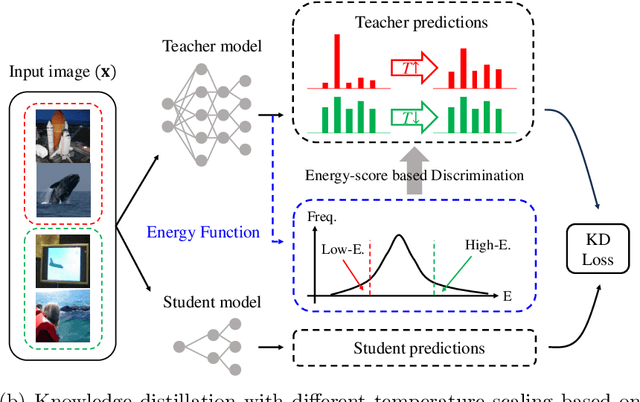
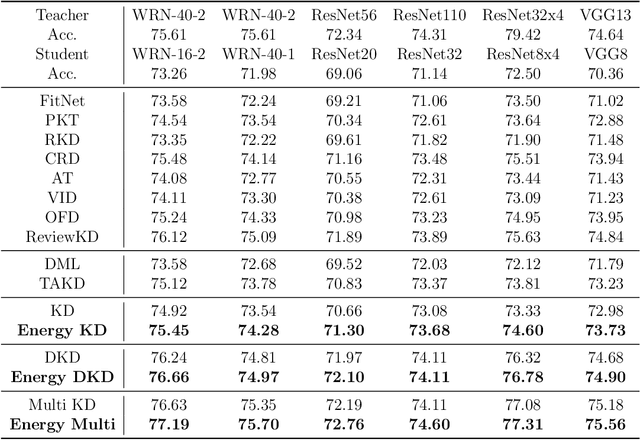
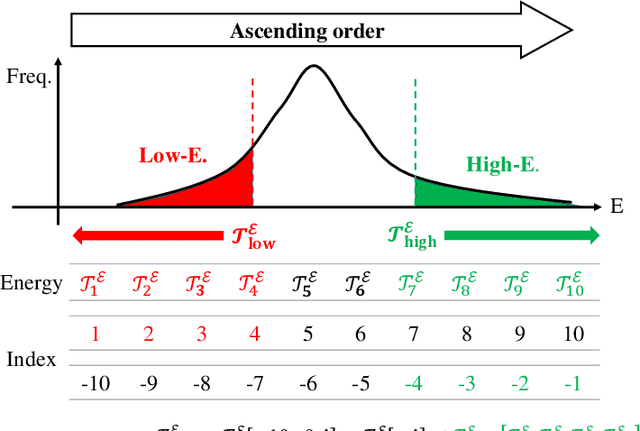
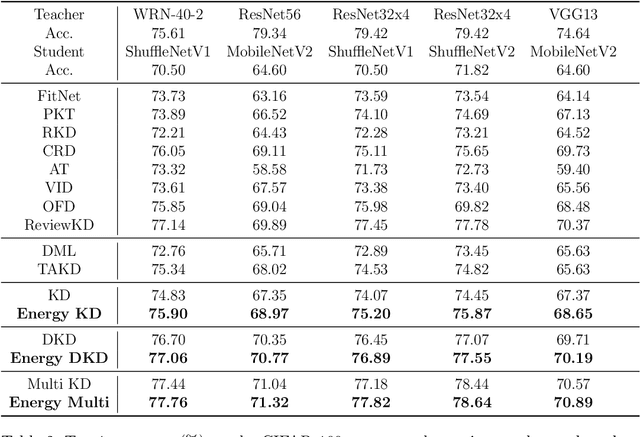
Abstract:To apply the latest computer vision techniques that require a large computational cost in real industrial applications, knowledge distillation methods (KDs) are essential. Existing logit-based KDs apply the constant temperature scaling to all samples in dataset, limiting the utilization of knowledge inherent in each sample individually. In our approach, we classify the dataset into two categories (i.e., low energy and high energy samples) based on their energy score. Through experiments, we have confirmed that low energy samples exhibit high confidence scores, indicating certain predictions, while high energy samples yield low confidence scores, meaning uncertain predictions. To distill optimal knowledge by adjusting non-target class predictions, we apply a higher temperature to low energy samples to create smoother distributions and a lower temperature to high energy samples to achieve sharper distributions. When compared to previous logit-based and feature-based methods, our energy-based KD (Energy KD) achieves better performance on various datasets. Especially, Energy KD shows significant improvements on CIFAR-100-LT and ImageNet datasets, which contain many challenging samples. Furthermore, we propose high energy-based data augmentation (HE-DA) for further improving the performance. We demonstrate that meaningful performance improvement could be achieved by augmenting only 20-50% of dataset, suggesting that it can be employed on resource-limited devices. To the best of our knowledge, this paper represents the first attempt to make use of energy scores in KD and DA, and we believe it will greatly contribute to future research.
Robustness-Reinforced Knowledge Distillation with Correlation Distance and Network Pruning
Nov 23, 2023Abstract:The improvement in the performance of efficient and lightweight models (i.e., the student model) is achieved through knowledge distillation (KD), which involves transferring knowledge from more complex models (i.e., the teacher model). However, most existing KD techniques rely on Kullback-Leibler (KL) divergence, which has certain limitations. First, if the teacher distribution has high entropy, the KL divergence's mode-averaging nature hinders the transfer of sufficient target information. Second, when the teacher distribution has low entropy, the KL divergence tends to excessively focus on specific modes, which fails to convey an abundant amount of valuable knowledge to the student. Consequently, when dealing with datasets that contain numerous confounding or challenging samples, student models may struggle to acquire sufficient knowledge, resulting in subpar performance. Furthermore, in previous KD approaches, we observed that data augmentation, a technique aimed at enhancing a model's generalization, can have an adverse impact. Therefore, we propose a Robustness-Reinforced Knowledge Distillation (R2KD) that leverages correlation distance and network pruning. This approach enables KD to effectively incorporate data augmentation for performance improvement. Extensive experiments on various datasets, including CIFAR-100, FGVR, TinyImagenet, and ImageNet, demonstrate our method's superiority over current state-of-the-art methods.
A$^3$: Accelerating Attention Mechanisms in Neural Networks with Approximation
Feb 22, 2020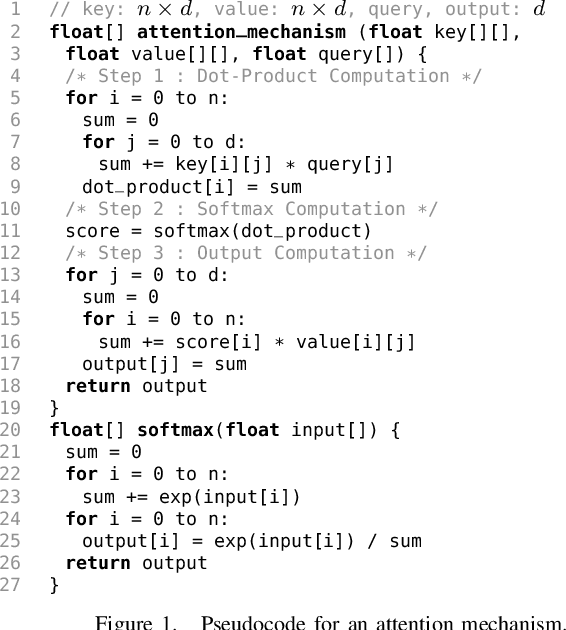

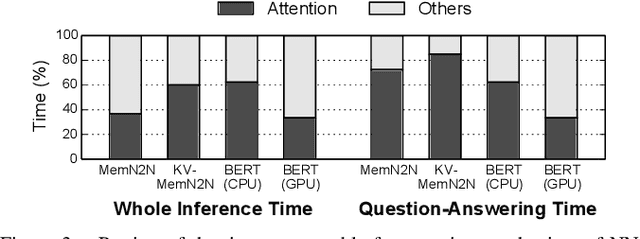

Abstract:With the increasing computational demands of neural networks, many hardware accelerators for the neural networks have been proposed. Such existing neural network accelerators often focus on popular neural network types such as convolutional neural networks (CNNs) and recurrent neural networks (RNNs); however, not much attention has been paid to attention mechanisms, an emerging neural network primitive that enables neural networks to retrieve most relevant information from a knowledge-base, external memory, or past states. The attention mechanism is widely adopted by many state-of-the-art neural networks for computer vision, natural language processing, and machine translation, and accounts for a large portion of total execution time. We observe today's practice of implementing this mechanism using matrix-vector multiplication is suboptimal as the attention mechanism is semantically a content-based search where a large portion of computations ends up not being used. Based on this observation, we design and architect A3, which accelerates attention mechanisms in neural networks with algorithmic approximation and hardware specialization. Our proposed accelerator achieves multiple orders of magnitude improvement in energy efficiency (performance/watt) as well as substantial speedup over the state-of-the-art conventional hardware.
 Add to Chrome
Add to Chrome Add to Firefox
Add to Firefox Add to Edge
Add to Edge